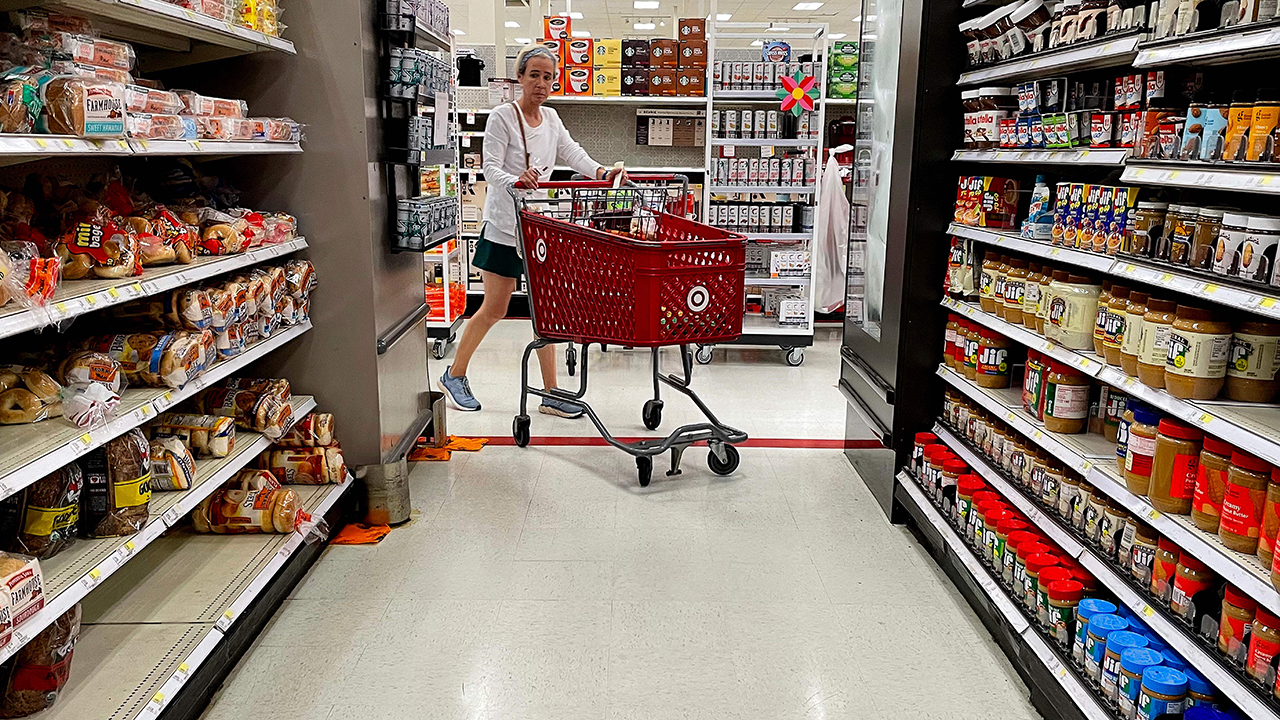Inflation measure closely watched by the Fed rises 0.3% in April
Commerce Department releases closely watched inflation data
Lower-income Americans are still struggling with high inflation: analyst
Bolvin Wealth Management Group President Gina Bolvin discusses the move in commodities, expected inflation data, the housing industry and her outlook for consumers.
An inflation measure closely watched by the Federal Reserve held steady in April as elevated prices continue to weigh on millions of Americans.
The personal consumption expenditures index showed that prices rose 0.3% from the previous month, according to the Commerce Department. On an annual basis, prices climbed 2.7%. Both of those figures are in line with expectations.
In another sign that inflation remains stubbornly high, core prices — which strip out the more volatile measurements of food and energy — climbed 0.2% from the previous month. From a year ago, prices are up 2.8%, unchanged from the previous two months.
"The PCE Price Index didn’t show much progress on inflation, but it didn’t show any backsliding, either," said Chris Larkin, managing director of trading and investing at E*Trade.
RAISING A CHILD IN THE US IS GETTING EVEN MORE EXPENSIVE
While the Fed is targeting the PCE headline figure as it tries to wrestle consumer prices back to 2%, Chair Jerome Powell previously told reporters that core data is actually a better indicator of inflation. Both the core and headline numbers point to inflation that is still running well above the Fed’s preferred 2% target.
Prices for goods rose 0.2% over the course of April, which included a 1.2% leap in energy prices and a 0.2% decline in food costs, while services prices were up 0.3%, according to the report.
WHY ARE GROCERIES STILL SO EXPENSIVE?
Shoppers are seen in a Kroger supermarket in Atlanta on Oct. 14, 2022. (Elijah Nouvelage/AFP via Getty Images / Getty Images)
High inflation has created severe financial pressures for most U.S. households, which are forced to pay more for everyday necessities like food and rent. The burden is disproportionately borne by low-income Americans, whose already-stretched paychecks are heavily affected by price fluctuations.
Other figures included in the report showed that consumer spending increased just 0.2% in April, below both the 0.3% estimate and the 0.8% figure recorded in March. The lower-than-expected figure suggests that Americans are pulling back on spending as they face steeper prices. Many economists anticipate that spending will slow further in the coming months as consumers continue to grapple with expensive goods, high interest rates and the resumption of federal student loan payments.
| Ticker | Security | Last | Change | Change % |
|---|---|---|---|---|
| I:DJI | DOW JONES AVERAGES | 40524.79 | +312.08 | +0.78% |
| I:COMP | NASDAQ COMPOSITE INDEX | 16831.483844 | +107.03 | +0.64% |
| SP500 | S&P 500 | 5405.97 | +42.61 | +0.79% |
The report comes as Fed policymakers weigh when to start cutting interest rates amid concerns that progress on inflation has stalled. Investors have steadily dialed back their expectations as central bank officials signal they are in no rush to cut until they are certain that inflation is conquered.
GET FOX BUSINESS ON THE GO BY CLICKING HERE
Stock futures ticked higher on Friday morning after the report showed that inflation rose mostly in line with expectations last month.
"Based on the initial reaction in stock index futures, the market will see it mostly as a positive," Larkin said. "Investors will have to remain patient, though. The Fed has suggested it will take more than one month of favorable data to confirm inflation is reliably moving lower again, so there’s still no reason to think a first rate cut will come any earlier than September."


